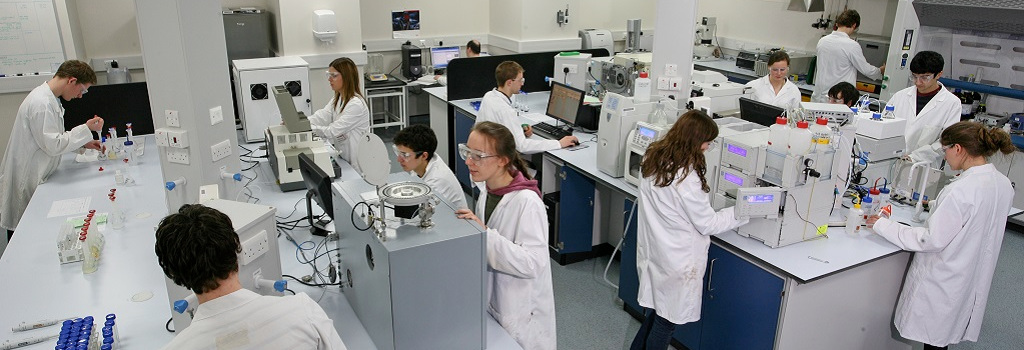Inclusive Laboratory Work

Many new students approach laboratory learning with excitement and trepidation. Overcoming this uneasiness is vital to make sure that the laboratory is seen as a safe place where students can experiment while following a pre-prepared script.
Inclusive laboratory work is that for which students feel prepared and understand the safe nature of the laboratory environment, where mistakes can happen and where learning from things going wrong is as important as learning when things go right.
Designing inclusive laboratory work addresses several, more universal, inclusivity aims, and may require you to make changes to the layout of physical space, the design of activities, attitudes and embedded practices and the provision of resources, in order to allow all students equal opportunity to succeed. An inclusive lab recognises that students come from diverse backgrounds and that each student is individual, and as such, brings with them a variety of attributes and learning needs. This approach poses the question “is the lab environment, including space and facilitation, welcoming to and supportive of all students?”
Start making changes
Making changes to practice can be challenging. However, there are two important ideas that can be considered at anytime and can feed into lab working practices as appropriate. The following section considers how flexibility and team working can aid inclusive lab work.
Building in flexibility
- Consider building in suitable alternatives for students who may not wish to undertake particular activities for physical, cultural, ethical or religious reasons. When reviewing teaching, making curriculum changes or designing lab activities, think about alternative ways in which students can achieve the same learning outcome.
- Provide students with a range of techniques for preparation, experimentation and lab reporting, so that students can pick the approach that best suits their abilities. Providing a variety of tools and techniques exposes students to a wider range of lab experiences.
- Could some aspects of the lab that might not be accessible for all be modified, if necessary?
- Building in flexibility from the start will make it easier to address particular circumstances, if necessary.
Allow opportunities for team working
Students who are working in teams can help share tasks and activities. This division of labour can help with flexibility, as suggested above. It also models the use of teams in professional labs.
Key questions to consider
- What are the central aims and outcomes of the lab session?
- Is there a good range of techniques, in terms of preparation, experimentation and reporting being used?
- Is the lab environment, including space and facilitation, welcoming to and supportive of all students?
- Are there health-related issues to consider, such as the welfare of pregnant students or those with particular ailments?
- Are there suitable alternatives for students who might not wish to undertake certain activities for cultural, ethical or religious reasons?
Accessibility
Designing accessible laboratory sessions which allow those with declared disabilities (physical, mental and learning) to engage fully is vitally important. Some key points to consider when making a lab accessible to students with a declared disability include:
- What are the central requirements of the work?
- Could assistive or adaptive technologies be used?
- Is everyone aware of evacuation plans and can all students use the proposed routes to safety?
- Are there adjustable workbenches which could be modified for wheelchair users?
- Labs can be noisy spaces. Can the acoustics be improved?
- Can lab demonstrators and technicians be trained to support those with additional needs?
Best Practice Tips
- A laboratory script or guide should be prepared in advance and released to the students at least 48 hours before the laboratory session. This can be written and shared in Word format, so students can adjust to their needs.
- A podcast describing the lab in detail can also be used as an addition to a written guide.
- Photos or 360-degree tours of new equipment or lab spaces may reduce anxiety for students with mental health problems, and provide useful familiarisation for all students.
- Simulations can be used as pre-laboratory tasks to support students in gaining familiarity with the equipment they’ll be using, and enable them to practice in a low-stakes environment.
- Making sure the laboratory is a welcoming and inclusive environment is important. Ensure all those who work with students (including technicians and demonstrators) have undertaken diversity and equality training; agreeing ground rules amongst students in a lab also helps establish a supportive and positive atmosphere for all.
Many steps you can take to make the lab environment more accessible, or the prospect of it less stressful, will benefit all your students not just those who have a physical disability or mental health need.
A student with a specific disability should have a plan, reviewed yearly, to outline specific adjustments that will be made. This may include permission to record seminars and tutorials, extra support such as a designated demonstrator or additional breaks. Depending on the specific circumstances, a risk assessment might also be necessary if there are any additional health and safety considerations.
